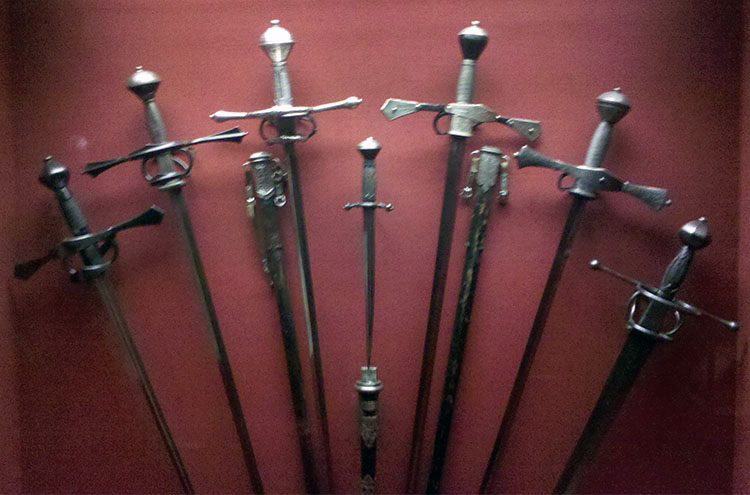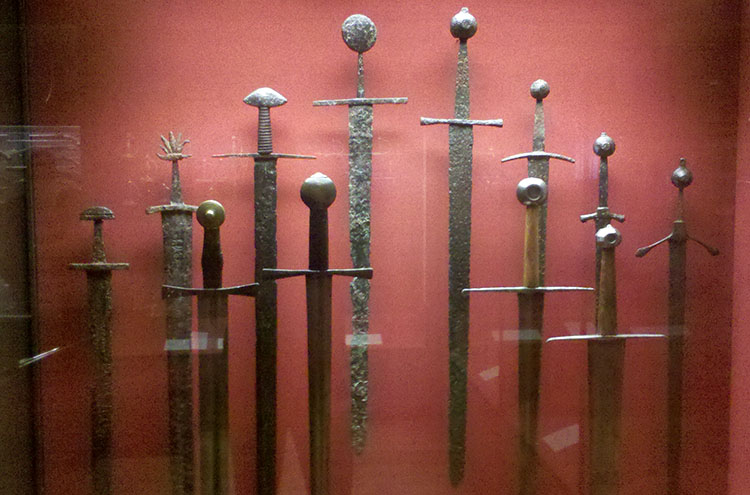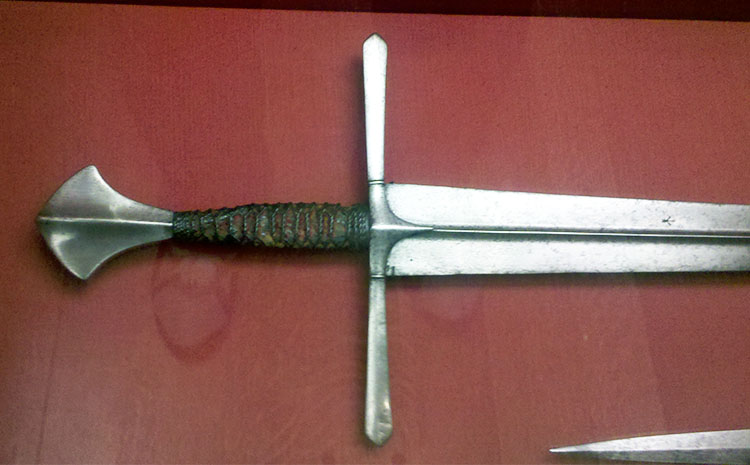Recent Articles
-
Christmas Sword Buying Guide 2025
Dec 03, 25 10:53 PM
Antique Medieval Swords
Antique medieval swords come in all kinds of condition as you might expect from swords between 500 to 1000 years old.. Most of the time, the hilts and scabbards are all long gone, leaving only heavily corroded steel. But every now and again, some beautiful almost pristine antiques find their way into museums or personal collections.
 The 600 year old Harriet Dean Sword recently discovered in - Texas! Price tag, roughly $500,000
The 600 year old Harriet Dean Sword recently discovered in - Texas! Price tag, roughly $500,000 Ewart Oakeshott
Ewart OakeshottTo truly appreciate medieval swords, you really should at least once in your life handle an antique. Most are much lighter and faster in the hand than early historians gave them credit for, and it was only really the pioneering work of Ewart Oakeshott, who created the Oakeshott sword typology, who exploded the myth that they all weighed 10lbs, were clumsy and often only given a cursory once over by medieval historians up to that time.
In this short article we will take a look at some antiques in museum collections so you can see some of the originals first hand in our gallery, and then give you an idea about how much they are actually worth - either to satisfy your curiosity, or start your own personal collection..
Antique Medieval Swords Gallery
Below are some photos taken by SBG forum moderator Bryan Heff from the Armory at the Philadelphia Museum of Art.
Where are the found?
 The vast majority of antique medieval swords are found in rivers like this one..
The vast majority of antique medieval swords are found in rivers like this one..It is a curious phenomenon, but the vast majority of real medieval swords were found in river beds.. How and why they ended up there is not fully understood. The most common theory is that they were ritually discarded by throwing them into a nearby river, either after the death of the owner, as an offering, lost by accident (such as if a barge sinks), etc, etc. But the fact remains that it is through dredging that a very large number of swords have been found.
The cold water and mineral deposits slow down the corrosion process, with the silt of the river bed actually proving a protective barrier.
While river finds are by far the most common, other swords are found in peat bogs, grave-sites, tombs and excavations are usually found by accident during construction projects from the 19th to the 21st century - and as such there is little doubt that there are many more swords waiting to be discovered than have been found to date..
Those that are in the best condition tend to have been preserved in armories over the centuries or in the private collections of aristocratic families and handed down through the generations, though this is comparatively rare.
Perhaps the most unusual find of an antique medieval sword was - of in all places - for sale at a garage sale in New Zealand! How it ended up there is a mystery, but whoever purchased it would have made the deal of the century, that is for sure..
How much and can you buy them?
The short answer is yes - you can buy them, but if you need to ask how much they are..
Many antique medieval swords are in private collections these days, but these are not the kind of swords you pick up on eBay..
It's not always public information on the prices of these antiques. Some are of such historical importance that they are essentially priceless and truly belong in a museum where they can be appreciated by everyone. But if you know where (and when) to look, you can find some for sale online..!
Peter Finer.com does not list prices, so if you need to ask, you probably can't afford it..
Fagan Arms is a very professional site, prices are listed and while antique medieval swords are rare, you never know what you will find on any given day.
Bonams Auctions also have medieval swords sometimes - and when they do, they tend to be the best and rarest around..

The sword above is listed in a press release by Bonhams here
and demonstrates clearly that the better the condition and the clearer
the provenance of the sword, the greater its value. The sword shown here sold at auction for $32,000..
I hope this information on antique medieval swords has been helpful. To return to Affordable Replicas of Medieval Swords from Antique Medieval Swords, click here

Buying Swords Online Can Be DANGEROUS!
Find the Best Swords in the:
Popular & Recommended ARTICLES

The ONLY true free online magazine for sword enthusiasts. Delivered once a month on the 1st day of the month, no filler and no BS, just the latest sword news & info delivered straight to your inbox.






















